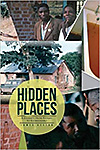Review: HIDDEN PLACES by James Heaton (Malawi)
 Hidden Places: A Journey from Kansas to Kilimanjaro
Hidden Places: A Journey from Kansas to Kilimanjaro
(Peace Corps creative non-fiction)
by James Heaton (Malawi [Nyasaland] 1962–64)
Xlibris, 2016
May 2016
118 pages
$19.95 (paperback), $29.99 (hardcover), $3.99 (Kindle)
Reviewed by Mary M. Flad (Thailand 1963–65)
•
James Heaton’s Hidden Places: a Journey from Kansas to Kilimanjaro is a beautifully written, and frequently hilarious, book. Heaton seems to have the gift of total recall of all of the details, and many of the misadventures, of his Peace Corps stint in Nyasaland in 1962 to 1964. Nyasaland was in transition to becoming the independent nation of Malawi.
Heaton conjures up the mix of idealism, naiveté, escapism, and longing for adventure that characterized so many of us who entered service in “the Kennedy era.” His time in Africa was spent teaching science and English on the secondary-school level. In a little more than a hundred pages, he describes the memorable moments, and the challenges in the classroom, as well as the sometimes-fractious relationship with his Peace Corps housemates.
But he also provides some breathtaking word-pictures of his natural surroundings, the snakes and birds and bugs and skies and sunsets. Capturing his first impression of a place, he writes:
. . . If the bottom of the sea had air, it would be the air of Dar es Salaam at night. The truck banged along the sodium-lighted streets, through the scent of jasmine and coffee-blossoms, past night watchmen sitting by paraffin lamps in shop entrances in front of their packing crate shelters. Backstreet women plied their trades by rows of Indian cloth shops. Mosques and nondescript apartment blocks of the newer part of the city towered over the narrow streets. The light-garlanded freighters stood out in the harbor turning infinitesimally with the tide. This was what no lectures or textbooks could teach: that what would really infect you in Africa was its never-ending contrasts . . ..”
So much has changed in the more than fifty years from the time Heaton is describing. Roads have been built and paved; communication and transportation improved. At the same time, health crises and displacement of refugees by war and violence have taken a terrible toll. Accounts like Hidden Places provide a record of the starting-point and early days of the Peace Corps in one country. This story was cut short when the government ordered the closing of the school where Heaton was teaching.
Before he left Africa, he made a trek to Mount Kilimanjaro (the name meaning “That Which is Impossible for the Birds”), and the description of the thrill and pain of the expedition left me feeling blisters and frostbite.
A brief postlude itemizes the frustrations and culture shock of returning to America, and the changes to the Malawi he knew in the years since Heaton’s time there. Volumes more could be written; but this eloquent description of times past is memorable indeed.
•
Reviewer Mary M. Flad (Thailand 5) taught in the Peace Corps in Southeast Asia in 1963-1965. She is a writer and artist, has worked with a number of non-profit organizations, and has a particular interest in immigration and refugee resettlement. Her article, “Sudden Refugees: They Create Their Own Camps and Plead for Water and Schools,” appeared in Worldview, vol. 16, no.1 (January-March 2003), pp.16-20.
No comments yet.
Add your comment